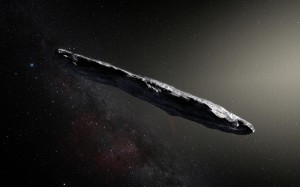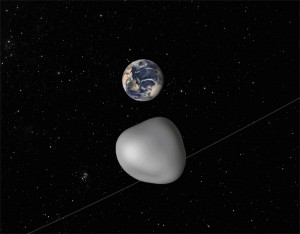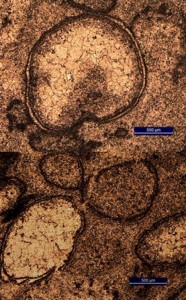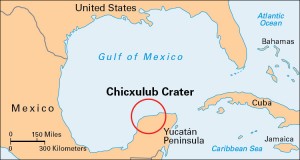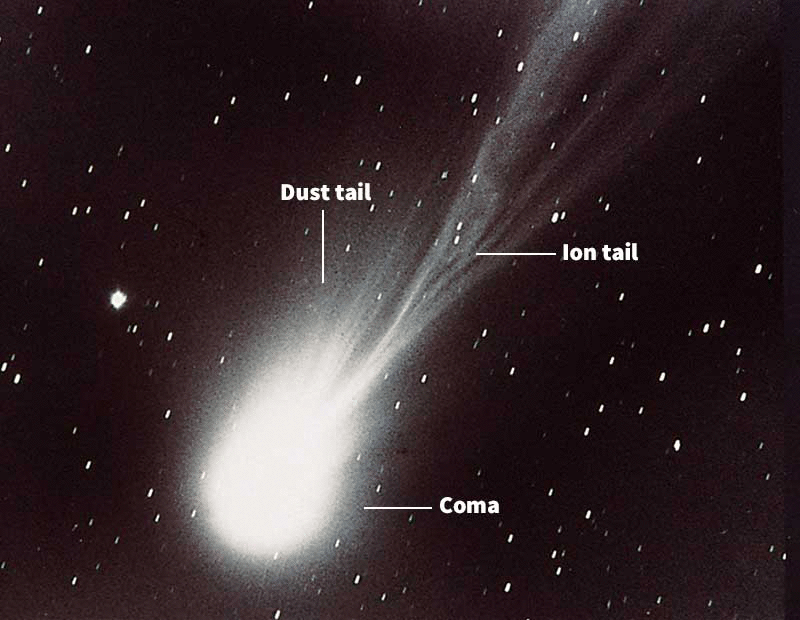DART: The Ultimate Double Dog Dare
Thursday, September 29th, 2022
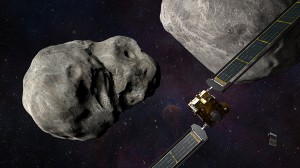
This illustration shows an imagined view of NASA’s Double Asteroid Redirection Test (DART) spacecraft approaching the asteroids Didymos and Dimorphos. The smaller spacecraft is LICIACube, built by the Italian Space Agency.
Credit: NASA/Johns Hopkins, APL/Steve Gribben
Scientists and engineers have designed spacecraft for many different purposes. Some bring people safely to the moon or the International Space Station. Others roam far into space to send pictures back to Earth for scientists to study. The National Aeronautics and Space Administration (NASA) built the Double Asteroid Redirection Test (DART) as a punching bag! DART was a spacecraft that intentionally collided with an asteroid.
Scientists planned the mission to find out whether a spacecraft collision could change an asteroid’s path through space. DART’s target asteroid was not a threat to Earth. But in the future, this method could be used to redirect a threatening asteroid away from Earth. Scientists are studying the effects of the DART impact to determine how the collision affected the asteroid’s path.
DART was a type of spacecraft called an impactor. An impactor smashes into the target it is studying, such as a planet, moon, or asteroid. Usually, scientists study the effects of the impact to learn about the physical characteristics of the target. Because DART was designed to move its target, it is considered a kinetic impactor.
DART traveled to Didymos, an asteroid that is about ½ mile (780 meters) wide. Didymos has a moonlet—a second, tiny asteroid in orbit around it—called Dimorphos. Dimorphos is sometimes nicknamed “Didymoon.” Dimorphos is 525 feet (160 meters) wide. Pairs of asteroids such as this one are known as binary systems. Scientists think about 15 percent of the asteroids closest to Earth are part of a binary system. Didymos and Dimorphos were chosen for the DART mission because their position is practical for a spacecraft to reach and because changes to Dimorphos’s orbit can be measured from Earth.
On Sep. 26, 2022, DART smashed into Dimorphos at a speed of 4.1 miles (6.6 kilometers) per second. Telescopes on Earth observed a bright flash at the moment of impact. Before the impact, Dimorphos orbited Didymos once every 11 hours and 55 minutes. The impact was expected to shorten this period and to move Dimorphos slightly closer to Didymos.
DART carried only one instrument, a camera. The camera helped it to steer automatically toward its target. DART also carried a shoebox-sized spacecraft called LICIACube. DART released LICIACube before it impacts Dimorphos. LICIACube photographed the impact test and its aftermath.
The National Aeronautics and Space Administration (NASA) launched DART on Nov. 24, 2021. The mission was sponsored by NASA’s Planetary Defense Coordination Office. The Italian Space Agency (ASI) built LICIACube. It is Italy’s first deep space probe.

